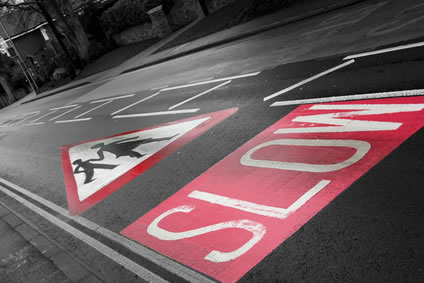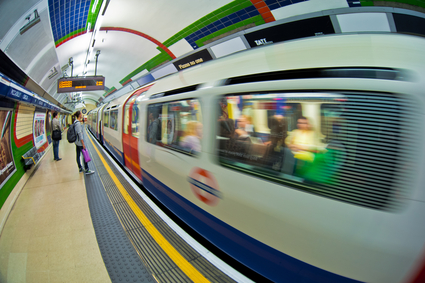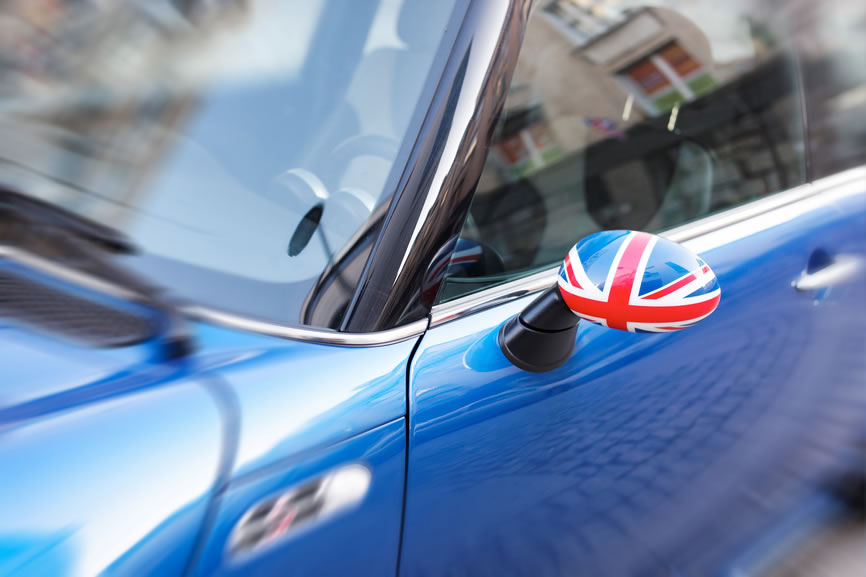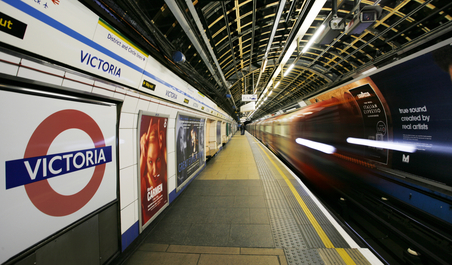Northumberland roads ranked most dangerous
Northumberland ranks bottom in a list of the safest English county roads in 2013, according to road safety data released by the Department for Transport.

Northumberland ranks bottom in a list of the safest English county roads in 2013, according to road safety data released by the Department for Transport [1].
Last year, there were 5.98 fatal, serious or minor accidents per 1,000 people on Northumberland's roads, compared to a national average of 2.91 accidents per 1,000. This resulted in 4,831 casualties (27 fatalities), including both vehicle occupants and pedestrians.
Of the 3,357 incidents recorded on Northumberland's roads, police officers were on scene at 2,544 accidents (76%), or an average of 7 per day.
Motorists driving on the county roads most likely to have an accident between 4pm to 6pm (evening rush-hour) on Wednesdays, according to the statistics, with an average casualty age of 30 years old.
78 percent of households in Northumberland own - or have access to - a car or vehicle, compared to a national average of 79.5 percent.
The top ten safest counties (accidents per 1,000 population) in England are as follows:
1: Greater London (0.3)2: Greater Manchester (0.84)3: Herefordshire (1.13)4: West Midlands (1.22)5: Middlesex (1.47)6: Rutland (1.49)7: Isle of Wight (1.72)8: Merseyside (1.85)9: Oxfordshire (1.91)10: Norfolk (1.96)11: Bedfordshire (2.05)
The most dangerous counties (accidents per 1,000 population) in England are as follows:
40: Gloucestershire (4.14)41: Bristol (4.28)42: Buckinghamshire (4.35)43: East Yorkshire (4.49)44: Lincolnshire (4.5)45: Surrey (4.55)46: Lancashire (4.7)47: Staffordshire (5.04)48: Cleveland (5.12)49: Northumberland (5.98)
The full list of all English counties can be found below.
View current road traffic conditions in Northumberland. Breakdown of 2013 statistics for Northumberland Number of Accidents SeverityNorthumberlandNationwide Fatal 0.8% (27 accidents) 1.1% (2846) Serious 11.2% (375 accidents) 13.1% (33174) Slight 88% (2955 accidents) 85.8% (216893)
Each week in 2013, there were an average of 65 accidents on Northumberland's roads:
- 1 fatalities (national average 55)
- 7 serious accidents (national average 638)
- 57 minor accidents (national average 4171)
Accidents on Northumberland's roads account for 1.1% of all accidents recorded nationally during 2013.
Day of Week Day of weekNorthumberlandNationwide Monday 13.4% (450 accidents) 14.3% (36179) Tuesday 15.2% (511 accidents) 15.5% (39198) Wednesday 16.5% (555 accidents) 14.9% (37702) Thursday 15.6% (523 accidents) 15.5% (39158) Friday 15.6% (525 accidents) 16.8% (42499) Saturday 13.8% (463 accidents) 12.6% (31977) Sunday 9.8% (330 accidents) 10.4% (26200)There were more accidents on Wednesday than there were on any other day of week on Northumberland's roads in 2013. The day with the least amount of accidents was Sunday.
According to Nationwide Insurance [2], Friday is typically the most dangerous day of the week to drive - they report that there is an average of 4,664 insurance claims per day across Britain, followed by Wednesday with an average of 4,197 claims per day. Research from Accident Exchange (an accident management company) has shown that road users are more than twice as likely to be involved in a crash on a Friday than Sunday [3] (statistically the quietest day of the week).
Time of Day TimeNorthumberlandNationwide 00:00-01.59 1.9% (63 accidents) 2% (5110) 02:00-03.59 1.4% (47 accidents) 1.2% (2980) 04:00-05.59 0.8% (28 accidents) 1.3% (3211) 06:00-07.59 5.3% (177 accidents) 6.5% (16326) 08:00-09.59 12.8% (430 accidents) 12.8% (32319) 10:00-11.59 9.9% (331 accidents) 10.1% (225467) 12:00-13.59 14.1% (473 accidents) 12.2% (30886) 14:00-15.59 15.4% (518 accidents) 13.6% (34302) 16:00-17.59 17.8% (599 accidents) 17.8% (45032) 18:00-19.59 12% (403 accidents) 12.3% (31146) 20:00-21.59 5.8% (196 accidents) 6.4% (16101) 22:00-23.59 2.7% (92 accidents) 4% (10019)The most prevalent time of day for accidents on Northumberland's roads is 4pm to 6pm (evening rush-hour).
Motorists and their passengers aren't the only ones affected by high casualty rates during rush hour. Across the country, pedestrian casualties peak during the evening rush-hour, in particular on Friday evenings between 5pm and 6pm, as well as the morning rush hour between 8am and 9am. In addition, children are more likely to be involved in a road accident as pedestrians on weekdays at morming and afternoon school times [4].
Driver Gender GenderNorthumberlandNationwide Male 63.7% (2137 accidents) 65.2% (164983) Female 28.3% (949 accidents) 28.6% (72347) Unknown 8.1% (271 accidents) 6.2% (15583)
63.7 percent of people involved in accidents on Northumberland's roads were male, and 28.3 percent being recorded as female. A further 8.1 percent were unknown or unrecorded gender.
Across the country, male drivers accounted for just over half (54%) of all casualties from accidents involving a young car driver [5].
Research by Waylen and McKenna (2002) shows that "men are more likely than women to be involved in crashes that occur on bends, in the dark or those that involve overtaking. Women, on the other hand, have a greater frequency of crashes occurring at junctions than men", and that "men are more at risk from accidents involving high speed while women are more likely to be involved in accidents resulting from perceptual judgement errors" [5].
Age of Driver AgeNorthumberlandNationwide 1.1% (36 accidents) 0.8% (2052) 16-20 6.8% (228 accidents) 7.6% (19155) 21-25 10.2% (341 accidents) 11.2% (28291) 26-35 19.3% (648 accidents) 20.2% (51061) 36-45 18.1% (607 accidents) 18.1% (45718) 46-55 17% (572 accidents) 15.7% (39616) 56-65 10.4% (349 accidents) 8.7% (22046) 66-75 3.8% (127 accidents) 4.3% (10803) 75+ 2.9% (96 accidents) 2.6% (6629)The average age of people involved in an accident on Northumberland's roads in 2013 was 30.
Research from Brake, the road safety charity, shows that younger drivers, in particular young male drivers have a higher risk of being involved in a road accident than older, more mature drivers [6].
Accidents on the road are the biggest single killer of young people in Britain, and as many as a quarter of all fatal and serious crashes involve a young driver, even though they make up just 12.5% of licence holders, according to driving licence data published by the Department for Transport [7].
The data also reveals that the age group of British motorists most likely to have 3 or more points on their licence is 40-45 year olds, with 10% of drivers in this age range having points. Just five percent of drivers over the age of 65 have points.
Weather Conditions WeatherNorthumberlandNationwide Fine weather 84.5% (2837 accidents) 81.4% (205960) Poor weather 15.5% (520 accidents) 17.2% (43551)Despite being hazardous, inclement weather doesn't automatically mean an increase in accidents on Northumberland's road network. The majority of accidents reported to police are in dry or fine weather conditions which in themselves can be dangerous. As many as 36 deaths each year are caused by the glare of the evening sun, the AA has reported, causing temporary blindness as it dazzles on the windscreen of the car, making driving extremely harzardous [8]. High pollen counts can also cause sneezing, meaning that the driver is momentarily out of control of their vehicle.
Light Conditions LightNorthumberlandNationwide Daylight 75.9% (2549 accidents) 74.5% (188433) Darkness (all) 24.1% (808 accidents) 25.5% (64480) Darkness Lights lit 19% (639 accidents) 18.9% (47834) Darkness Lights unlit 0.6% (20 accidents) 0.5% (1382) Darkness No lighting 4% (133 accidents) 4.6% (11737) Darkness Lighting Unknown 0.5% (16 accidents) 1.4% (3527)Driving conditions at night in the dark are considerably different to daytime conditions, with many more hazards and risks. Although many more accidents occur during daylight times, this is due to the sheer number of vehicles on the road during the day.
RoSPA (The Royal Society for the Prevention of Accidents) has shown that 'the danger of falling asleep at the wheel is a significant factor at night', accounting for as many as 20 per cent of all serious accidents on the country's roads and motorways. In addition, visibility decreases and other vulnerable road users are more difficult to see at night. [9]
Road Type TypeNorthumberlandNationwide Motorways 1.2% (41 accidents) 4.7% (11917) A Roads 54.4% (1825 accidents) 48.2% (121859) B Roads 16% (537 accidents) 12.5% (31653) C Roads 11.4% (382 accidents) 8.2% (20856) Unclassified 17% (572 accidents) 26.3% (66628)Motorways: Roads designated with a 'M' prefix or suffix, for example M1, A1(M). Speed limit generally 70mph. A Roads: Primary and non-primary routes with a 'A' suffix, for example A12 B Roads: Roads designated with a 'B' prefix or suffix, for example B100. Regional roads that connect areas of lesser importance. C Roads: Used as local authority designations for routes in their area for administrative purposes, not shown on road maps. Unclassified: Local roads that have no defined destination.
Age of Vehicle AgeNorthumberlandNationwide 7.3% (245 accidents) 5.4% (13692) 1-5 yrs old 20.7% (695 accidents) 18.8% (47614) 6-10 yrs old 29.3% (982 accidents) 27.2% (68902) 11-15 yrs old 15.4% (516 accidents) 17.6% (44582) 16-20 yrs old 1.5% (49 accidents) 2.6% (6587) 21-25 yrs old 0.3% (11 accidents) 0.5% (1189) >25 yrs old 0.3% (9 accidents) 0.2% (621)In 2011, the average of a car in an accident was 6.7 years old. The average age of a car in Britain in the same year was 7.5 years old [15].
Journey Purpose PurposeNorthumberlandNationwide Work related 20.9% (701 accidents) 16.7% (42339) Commuting 11.6% (391 accidents) 9.8% (24899) School run/trip 1.3% (45 accidents) 1.4% (3488) Other 66.1% (2220 accidents) 72% (182187)Work-related road traffic accidents are the single largest cause of occupational fatality in the UK, according to the Department for Transport 10, and motorists who drive for business purposes are at a higher than average risk of being involved in an accident than the general public.
An in-depth study of work-related accidents shows that drivers of company cars, vans and lorries (LGV's) all appeared to have a high 'blameworthiness ratio' in their accident involvement. Conversely, drivers of buses, taxis and emergency vehicles show a low 'blameworthiness ratio'. Workers on, in or near the road tend to become involved in accidents through the fault of drivers who tend to 'aggressively assert their right of way over pedestrians with little regard to their safety', the report reveals.
However, the most recent work-related road traffic accident data (published by the HSE Executive) shows that the number of accidents per 100,000 workers has decreased from the beginning of the last decade from 370 incidents per 100,000 workers in 2001/02 to 260 in 2011/12 [11].
According to research conducted by Road Safety Analysis, more than 300,000 accidents each year are attributed to the 'school run' where parents and guardians take children to and from their school [12] between 7.30am-8.59am and 3.00pm-4.59pm.. Around 86,000 children were involved in road accidents near their school between 2007-2013, with 804 fatalities in 2011 alone. The most dangerous cities for school-run accidents with injuries are London, Manchester, Liverpool, Bradford, Oldham, Leicester, Birmingham and Nottingham.
English Counties League Table CountyAccidents Per 1000 peoplePopulation Northumberland 5.98316300Cleveland 5.12541333Staffordshire 5.04849600Lancashire 4.71171600Surrey 4.551135500Lincolnshire 4.5714800East Yorkshire 4.49334700Buckinghamshire 4.35506700Bristol 4.28428100Gloucestershire 4.14598300North Yorkshire 4.02601200Kent 3.981466500Essex 3.921396600Hampshire 3.691322300Tyne and Wear 3.511104100Devon 3.5747900Nottinghamshire 3.47786700Leicestershire 3.39651200Somerset 3.1531600Wiltshire 2.99474300Humberside 2.98858040Derbyshire 2.88770600Warwickshire 2.73546500Shropshire 2.72307100Cheshire 2.71028600Northamptonshire 2.66693900Dorset 2.64413800Worcestershire 2.49566500Sussex 2.411609500Cornwall 2.4533800South Yorkshire 2.341343900Hertfordshire 2.291119800Suffolk 2.17730100West Yorkshire 2.172227400Cambridgeshire 2.14622200Durham 2.13513000Berkshire 2.12863800Cumbria 2.06499800Bedfordshire 2.05617000Norfolk 1.96859400Oxfordshire 1.91654800Merseyside 1.851380800Isle of Wight 1.72138400Rutland 1.4937600Middlesex 1.472234543West Midlands 1.222739800Herefordshire 1.13183600Greater Manchester 0.842685400Greater London 0.38196700 Notes to editorsUsing the latest government road safety statistics, we have extracted data from DtT records to show you an in-depth breakdown of accidents that occuring in 2013 on Northumberland roads and highways, including time of day, day of week, severity, gender, weather conditions and more, cross-referencing the data against population statistics [13].
The information shown above for Northumberland roads has been extracted from official data from the Department for Transport. Data is supplied by British police forces via the STATS19 system [14], a report form that allows police officers to record accidents on the publich highways. Time, date, location and road conditions are recorded onto the form, as well as further details of vehicles and casualties involved in the accident.
Data collected from the STATS19 system is used by organisations to improve road safety for all users of the highways, as well as for research purposes and monitoring traffic movement.
Readers should be aware that although comparisons with death registration statistics show that very few, if any, road accident fatalities are not reported to the police, not all accidents are reported to the police, especially minor incidents.
Please also note that although we have tried to extract the data from the official sources as accurately as possible, statistics shown above may be approximate, and we cannot be held responsible for any inaccuracies resulting from errors in the extraction and evaluation process. References 1 Department for Transport Road Safety Data: http://data.gov.uk/dataset/road-accidents-safety-data 2 Drive safer on Fridays: http://autos.aol.com/article/fridays-most-dangerous-day-drive/ 3 Accident Exchange - Did you know: http://insight.accidentexchange.com/didyouknow.html 4 "RSGB - Extracted from The Stepping Out report prepared by PACTS and Road Safety Analysis and Pedestrian safety Factsheets prepared by Road Safety GB" and http://www.telegraph.co.uk/motoring/road-safety/8107452/Friday-rush-hour-crunch-time-for-motorists.html 5 Sex differences in driving and insurance risk: http://www.sirc.org/publik/driving.pdf 6 Young drivers - the hard facts: http://www.brake.org.uk/info-resources/info-research/road-safety-factsheets/15-facts-a-resources/facts/488-young-drivers-the-hard-facts 7 Driving Licence Data: http://data.gov.uk/dataset/driving-licence-data 8 Dazzling sunsets kill 36 drivers: http://www.dailymail.co.uk/news/article-2461972/Glare-sun-contributes-3-000-road-accidents-particularly-dangerous-time-year.html 9 Driving at night (RoSPA): http://www.rospa.com/roadsafety/adviceandinformation/driving/driving-at-night.aspx 10 Work-related Road Accidents (Orsa.org.uk): http://www.orsa.org.uk/guidance/pdfs/indepth_study_work_related_road_accidents.pdf 11 LFS Work-related RTA's in Britain: http://www.hse.gov.uk/statistics/adhoc-analysis/lfs-worked-related-rta.htm 12 Transport Network - Accidents near schools: http://www.transport-network.co.uk/1200-children-a-month-involved-in-road-accidents-near-schools/9346 13UK Population Estimates: http://en.wikipedia.org/wiki/List_of_English_counties 14http://www.adls.ac.uk/department-for-transport/stats19-road-accident-dataset/?detail (STATS19 Road Accident dataset) 15Young drivers: https://www.gov.uk/government/uploads/system/uploads/attachment_data/file/236989/young-drivers-2011.pdf
.highchart { border-collapse: collapse; text-align: left;width:100%} .highchart {font: normal 15px/150% Arial, Helvetica, sans-serif; background: #fff; overflow: hidden; border: 1px solid #006699; } .highchart td, .highchart th { padding: 0 10px; } .highchart thead th {background:-webkit-gradient( linear, left top, left bottom, color-stop(0.05, #006699), color-stop(1, #00557F) );background:-moz-linear-gradient( center top, #006699 5%, #00557F 100% );filter:progid:DXImageTransform.Microsoft.gradient(startColorstr='#006699', endColorstr='#00557F');background-color:#006699; color:#FFFFFF; font-size: 14px; font-weight: bold; border-left: 1px solid #0070A8; text-transform:uppercase} .highchart thead th:first-child { border: none; } .highchart tbody td { color: #00496B; border-left: 1px solid #444;font-size: 14px;font-weight: normal; } .highchart tbody .alt td { background: #E1EEF4; color: #00496B; } .highchart tbody td:first-child { border-left: none; } .highchart tbody tr:last-child td { border-bottom: none; } .highchart tbody tr td:first-child {text-transform:uppercase} .highchart tbody td {background:#333;color:#fff;font-size:11px;border-bottom:1px solid #444;padding:5px 10px;text-shadow:#000 1px 1px 1px} .highchart tbody td span {color:#999} .highchartMaster { border-collapse: collapse; text-align: left;width:100%} .highchartMaster {font: normal 15px/150% Arial, Helvetica, sans-serif; background: #fff; overflow: hidden; border: 1px solid #006699; } .highchartMaster td, .highchartMaster th { padding: 0 10px; } .highchartMaster thead th {background:-webkit-gradient( linear, left top, left bottom, color-stop(0.05, #006699), color-stop(1, #00557F) );background:-moz-linear-gradient( center top, #006699 5%, #00557F 100% );filter:progid:DXImageTransform.Microsoft.gradient(startColorstr='#006699', endColorstr='#00557F');background-color:#006699; color:#FFFFFF; font-size: 14px; font-weight: bold; border-left: 1px solid #0070A8; text-transform:uppercase} .highchartMaster thead th:first-child { border: none; } .highchartMaster tbody td { color: #00496B; border-left: 1px solid #444;font-size: 14px;font-weight: normal; } .highchartMaster tbody .alt td { background: #E1EEF4; color: #00496B; } .highchartMaster tbody td:first-child { border-left: none; } .highchartMaster tbody tr:last-child td { border-bottom: none; } .highchartMaster tbody tr td:first-child {text-transform:uppercase} .highchartMaster tbody td {;background:#333;color:#fff;font-size:11px;border-bottom:1px solid #444} .highchartMaster tbody td span {color:#777} h2 {color:#fff;padding:0;margin:0;font-size:18px} .headr {background:#074162;padding:5px 10px;margin:0 0 10px 0;border-bottom:1px solid #fff;color:#fff;font-size:16px;font-weight:bold} .graphbox {width:100%;background:#ddd;padding:0 0 15px 0;margin:20px auto 30px auto;border-bottom:6px solid #333} .graphbox p,.graphbox li {font-size:12px;text-align:left;padding:10px 10px 0 10px;line-height:1.6;margin:0;text-shadow:#fff 1px 1px 1px} .graphbox li {padding:0} .graphbox ul {padding:10px 15px;background:#eee;margin:10px 15px 5px 15px} .graphbox hr {border:0;border-bottom:1px solid #fff;height:1px} #references {line-height:1.5;background:#eee;padding:10px} $(document).ready(function() { $('table.highchart') .bind('highchartTable.beforeRender', function(event, highChartConfig) { highChartConfig.colors = ['#006699', '#C0C0C0']; }) .highchartTable(); $('table.highchartMaster') .bind('highchartTable.beforeRender', function(event, highChartConfig) { highChartConfig.colors = ['#006699', '#A4D6F7']; }) .highchartTable(); });Highways England news licensed and reproduced under the Open Government Licence v3.0
comments powered by DisqusOther Stories
 Transport & traffic news daily | Saturday, 20 April 2024
Transport & traffic news daily | Saturday, 20 April 2024Our daily roundup of traffic and travel news and press releases from official transport sources
 Travel news daily | Friday, 19 April 2024
Travel news daily | Friday, 19 April 2024Our daily roundup of traffic and travel news and press releases from official transport sources
 Transport & traffic summary | Thursday, 18 April 2024
Transport & traffic summary | Thursday, 18 April 2024Our daily roundup of traffic and travel news and press releases from official transport sources
 Transport & traffic summary | Wednesday, 17 April 2024
Transport & traffic summary | Wednesday, 17 April 2024Our daily roundup of traffic and travel news and press releases from official transport sources
 News in brief | Tuesday, 16 April 2024
News in brief | Tuesday, 16 April 2024Our daily roundup of traffic and travel news and press releases from official transport sources
 Traffic & travel news roundup | Monday, 15 April 2024
Traffic & travel news roundup | Monday, 15 April 2024Our daily roundup of traffic and travel news and press releases from official transport sources

Except where otherwise noted, content and photographs on this site are licensed under a Creative Commons Attribution 3.0 License.
Owned, operated and copyright CliqTo Ltd 2024 and Chris Haycock. Registered company number 7575287.